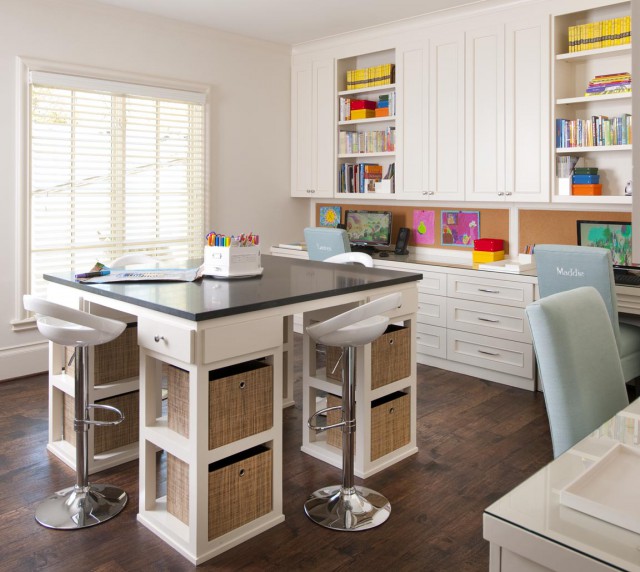7 Ways to Make Homework Fun (Seriously!)
Make homework fun by changing the way you look at it
Your kids just spent all day at school. And now you’re asking them to do what? Homework? Hey, that’s kind of like having school at home. After an entire day of paper, pencils, and books, your child may resist (and that’s putting it politely) getting down to business during the after-school hours. Don’t stress out. Whether your child has to study a vocab list, do a few zillion math equations, or finish a few extra assignments, we’re sharing seven tips that can magically transform homework from a super-struggle to some serious fun!

1. Work Together
Why not be hands-off when it comes to your kid’s homework, while still working beside one another? Return emails, answer your co-worker’s texts or work on the PTA fundraiser, modeling focused work to your child as the two of you spend QT together. If you think this seems like you’re not paying attention to your child or you’re slacking when it comes to parenting—you aren’t. Instead, you’re creating a shared workspace where the two of you can get business done together.
2. Get Creative
Sitting like a statue and calculating problem after problem on a math worksheet isn’t exciting, so consider turning a study session into an all-out artsy adventure! As your kid reads a chapter from the assigned text, use the opportunity as a chance to put on a play. If not acting, paint out math problems, sculpt letters or turn American history into a song.
Other ideas (perfect for older kiddos) include more sophisticated setups like creating a series of paintings explaining a text the child is trying to interpret or interpreting a poem using their musical notes. Kindergarten-aged kids set can get back to basics and finger paint letters, make clay characters from a story or bang on pots and pans to learn about patterns or counting.
RELATED: 11 Math Games That Equal Tons of Fun

4. Take It Outside
If there’s an outdoor space where they can spread out and study in your home, encourage it. A study showed that workers saw a 45% increase in productivity after being outside for about 30 minutes. Plus, offering up 10-minute breaks in the sun is a huge perk.
4. Make It a Group Effort
Start a study group. Have your kiddo invite classmates to read, write and do math equations together. If your student is old enough to handle organizing and delegating, take a step back and let your kid take on a leadership role. Younger kids may need more help—think of this as a mini-educational play date for them.

5. Design an Awesome Workspace
Take a page from some of the coolest places on Earth to work. Google, Apple and other tech giants all have fab workspaces for their employees. Why? To increase productivity. Create a communal workstation that all your kids (or all your family) can share instead of sending your little learners off to their room alone. Mix it up with a tall desk (by using a shelf), so your child can stand and work, or swap out desk chairs for a yoga ball or a twisty stool.
RELATED: 17 At-Home Learning Spots to Keep Kids on Track
6. Engage the Senses
There is a reason those darned pop-its were suddenly in every kid’s hands. While engaging their sense of touch, smell or sight might seem like a distraction, it helps them focus. Try doing a sensory activity like making your playdough. You can also engage other senses: Stash a stress ball in the homework area to engage the sense of touch or play white noise to break the quiet distracting to your child.
7. Hold Office Hours
Your child needs some homework help. Instead of hovering (no helicopters here) or taking over and writing your very own book report, set up office hours—just like your college professors did. Make the living room couch or the dining room table into your “office.” The kids can schedule a time to ask questions or can come to your “open hours.” This lets you help your child without actually doing the work yourself
